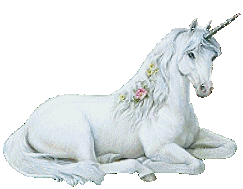As a Celtic symbol, the sword is reputed to be associated with Nuada, the first king of the TUATHA DÉ DANANN. In fact, Nuada’s great sword is considered one of the four treasures (sword, stone, spear, cauldron). The sword is called the Sword of Light or the Sword of Truth. Nuada's weapon was otherworldly, forged in the city of Findias in the land of Tir Na Nog. Nuada's sword was irresistible. When pulled from its scabbard, no enemy could flee from it, and its blow was always fatal. A sword is the ultimate symbol of a warrior, the Celtic warrior's sword would be an utmost status symbol.
In the ancient Celtic tradition we find Lugh and his invincible sword. Lugh is a Celtic god known as “The Shining One” who was widely worshipped by all the Celtic tribes. Archaelogists count more monuments dedicated to Lugh than to any other Celtic god. Roman Emperor Julius Caesar compared Lugh to the Roman god Mercury. In Irish myth, he´s called Lugh Lámfhota, a strong and handsome warrior, god of light, and member of the TUATHA DÉ DANANN. Lugh was a skilled craftsman and a magician who was credited with making many magical weapons, including a sword that could cut through any object. He also owned the Gáe Assail (Sword of Lugh, a lightning spear that always returned to the hand that had thrown it.
Source: Celtic Mythology A to Z (By Gienna Matson, Jeremy Roberts-2nd Edition)
Most of Celtic tattoo designs are taken from the Irish Illuminated Manuscripts ‘The Book of Kells’, on display in the library of Trinity College in Dublin. There are certain theories that the Celtic warrior would have free flowing tattoos embellished on his body along sexual/prime energy points of his body....these points are called “meridians” The idea is that these imprints along power meridians would enhance the warriors' performance in battle.
Celtic Cross Tattoo - The Celtic Cross, sometimes also known as the Wheel Cross or the Ring Cross, began to appear in Europe during the Middle Ages, beginning as early as the 5th century. Although today in tattoo designs it is typically an ornate symbol of Christianity, it likely derived from much earlier pagan symbols. In fact, these simple pagan images were probably associated with fertility -- the cross, or more literally a simple "plus sign", standing for the male generative power and the circle for the female. Also linked with fertility in agriculture, these two symbols sometimes stood for the sun. Early on however, as Christianity began to spread throughout Europe, the plus sign was elongated into a cross and the symbol was adopted and placed in churches and graveyards. In Scandinavian countries, it was erected in locations where accidents or acts of violence had occurred and it was also used in front of farmhouses. Today its more common use is in the form of gravestones in, for example, Ireland, where the Celtic association is strongest. Most often in tattoo designs, the Celtic Cross is treated with the most famous of the art motifs associated with that region, intricate knotwork. Knotwork is a constant theme in Celtic art, especially in Irish manuscript illumination. The fantastic illuminated books that have survived for us today began to be produced in the Celtic west sometime after about 500 AD. Religion managed to survive the Middle Ages in monasteries, where artist monks labored to produce the lavishly illustrated Christian manuscripts known today as the Book of Kells, the Lindisfarne Gospels, or the Book of Durrow, as a few examples. In fact, much of Celtic tattoo art is modeled on ornamentation from these manuscripts and the Celtic Cross is no exception. The knotwork is a symbol of constant motion -- the developing, coiling, and intertwining of human and cosmos, in a never ending cycle. It is thus particularly apt in the Celtic Cross tattoo, a permanent symbol of the intertwining of heaven and earth.
Source: http://www.tattoosymbol.com
Wednesday, 21 December 2011
Subscribe to:
Post Comments (Atom)










2 comments:
OMG OMG!!! FLAT CAP!!!
Super gay
Post a Comment